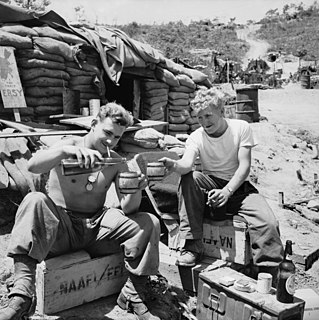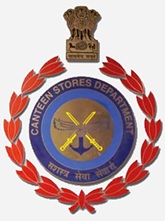Related Research Articles

The Navy, Army and Air Force Institutes is a company created by the British government on 9 December 1920 to run recreational establishments needed by the British Armed Forces, and to sell goods to servicemen and their families. It runs clubs, bars, shops, supermarkets, launderettes, restaurants, cafés and other facilities on most British military bases and also canteens on board Royal Navy ships. Commissioned officers are not usually supposed to use the NAAFI clubs and bars, since their messes provide these facilities and their entry, except on official business, is considered to be an intrusion into junior ranks' private lives.

The Canteen Stores Department, (CSD), is a solely owned Government of India Enterprise under Ministry of Defence and has its depot in all major military bases operated by the Indian Armed Forces.

House of Fraser is a British department store group with 44 outlets across the United Kingdom, which is now part of Frasers Group. It was established in Glasgow, Scotland in 1849 as Arthur and Fraser. By 1891, it was known as Fraser & Sons. The company grew steadily during the early 20th century, and after the Second World War a large number of acquisitions transformed the company into a national chain.

The Royal Arsenal Co-operative Society (RACS) was a large consumer co-operative based in south east London, England. The co-operative took its name from the Royal Arsenal munitions works in Woolwich and its motto was: "Each for all and all for each". In 1985 it merged into the national Co-operative Wholesale Society.

Co-operative Retail Services was the second-largest consumer co-operative society in the United Kingdom. In 2000, it was dissolved by its members, merging with the larger Co-operative Wholesale Society, to form the Co-operative Group (CWS) Ltd.

The Honourable Sir John William Fortescue was a British military historian. He was a historian of the British Army and served as Royal Librarian and Archivist at Windsor Castle from 1905 until 1926.
Army & Navy Stores was a department store group in the United Kingdom, which originated as a co-operative society for military officers and their families during the nineteenth century. The society became a limited liability company in the 1930s and purchased a number of independent department stores during the 1950s and 1960s. In 1973 the Army and Navy Stores group was acquired by House of Fraser. In 2005 the remaining Army & Navy stores were refurbished and re-branded under the House of Fraser nameplate. House of Fraser itself was acquired by Icelandic investment company, Baugur Group, in late 2006, and then by Sports Direct on the 10 August 2018.

Sir Lancelot Carrington Royle, was a British Olympian and businessman.
Rackhams was a British department store that opened in Birmingham, England in 1881. The business became part of the Harrods group in 1955, before Harrods was purchased by House of Fraser in 1959. As part of the Harrods grouping in House of Fraser, during the 1970s the Rackhams name was selected to be used as the Midlands brand name and several stores were added to its portfolio. In 2000 the Rackhams name was retired and replaced by House of Fraser.

Henry Harvey Vivian was an English trade unionist, and Liberal Party politician and campaigner for industrial democracy and co-partnership, especially noted for his work in co-partnership housing.
John Steven Leake was an English recipient of the Distinguished Service Medal whilst working for the Navy, Army and Air Force Institutes (NAAFI), one of only twelve to be issued to the British forces during the Falklands War. Prior to working for the NAAFI, he worked in private security and was a soldier in the Devonshire and Dorset Regiment of the British Army.
The Queen's Birthday Honours 1958 were appointments in many of the Commonwealth realms of Queen Elizabeth II to various orders and honours to reward and highlight good works by citizens of those countries. The appointments were made to celebrate the official birthday of The Queen. They were published on 3 June 1958 for the United Kingdom and Colonies, Australia, New Zealand, Ghana, and the Federation of Rhodesia and Nyasaland.
The 1949 New Year Honours were appointments by many of the Commonwealth realms of King George VI to various orders and honours to reward and highlight good works by citizens of those countries. They were announced in supplements to the London Gazette of 31 December 1948 for the British Empire, New Zealand, India, and Ceylon to celebrate the past year and mark the beginning of 1949.
The 1948 Birthday Honours were appointments by King George VI to various orders and honours to reward and highlight good works by citizens of the Commonwealth Realms. The appointments were made to celebrate the official birthday of the King, and were published in The London Gazette on 4 June.
The 1947 New Year Honours were appointments by many of the Commonwealth Realms of King George VI to various orders and honours to reward and highlight good works by citizens of those countries. They were published on 31 December 1946.
The King's Birthday Honours 1943 were appointments by King George VI to various orders and honours to reward and highlight good works by people of the British Empire. They were published on 2 June 1943 for the United Kingdom and Canada.
This is a list of Member of the Order of the British Empire (MBE) awards in the 1918 Birthday Honours.
The 1918 New Year Honours were appointments by King George V to various orders and honours to reward and highlight good works by citizens of the British Empire. The appointments were published in The London Gazette and The Times in January, February and March 1918.
References
- ↑ United States. Congress. House. Special Committee on Un-American Activities (1938-1944) (1938). Investigation of Un-American Propaganda Activities in the United States: Hearings Before a Special Committee on Un-American Activities, House of Representatives, Seventy-fifth Congress, Third Session-Seventy-eighth Congress, Second Session, on H. Res. 282, to Investigate (l) the Extent, Character, and Objects of Un-American Propaganda Activities in the United States, (2) the Diffusion Within the United States of Subversive and Un-American Propaganda that is Instigated from Foreign Countries Or of a Domestic Origin and Attacks the Principle of the Form of Government as Guaranteed by Our Constitution, and (3) All Other Questions in Relation Thereto that Would Aid Congress in Any Necessary Remedial Legislation. U.S. Government Printing Office. pp. 1435–.
- 1 2 Anne Marie Baylouny (2010). Privatizing Welfare in the Middle East: Kin Mutual Aid Associations in Jordan and Lebanon. Indiana University Press. pp. 58–. ISBN 978-0-253-35472-3.
- 1 2 3 4 5 Raińska, Kinga (2018). "Korespondencja prywatna oficera rezerwy II RP porucznika Juliana Bulsy w zbiorach Muzeum Warmii i Mazur w Olsztynie" (PDF). Niepodległość i Pamięć. 25/3 (63): 51–76.
- 1 2 3 Trocka, Halina (2004). Spółdzielczość polska w kampanii wrześniowej i antyhitlerowskim ruchu oporu na terenie Generalnego Gubernatorstwa (1939-1945) (in Polish). Spółdzielnia Pracy Czasopisma Spółdzielca. p. 22. ISBN 978-83-921723-0-7.
- ↑ Niemirycz, Wojciech (2008). "Początki spółdzielczości wojskowej w Modlinie ...i w Gdyni" (PDF). Gdańskie Zeszyty Numizmatyczne. 76: 20–22.
- ↑ Adamek, Kazimierz (1998). Intendentura Wojska Polskiego: 1918-1956 (in Polish). Dom Wydawniczy Bellona. p. 149. ISBN 978-83-11-08873-3.
- ↑ "Ex-private stands firm after online harassment for criticising military". Prachatai English. Retrieved 2021-05-11.
- 1 2 3 "Army & Navy Stores Ltd Army & Navy Co-operative Society Ltd". House of Fraser Archive (Record: c0512). Retrieved 30 December 2015.
- ↑ "Army & Navy Store (Bromley) Ltd". House of Fraser Archive (Record: c2708). Retrieved 30 December 2015.
- ↑ "Company: Army & Navy Stores Ltd Army & Navy Co-operative Society Ltd". House of Fraser Archive. Retrieved 9 May 2021.
- 1 2 3 Fortescue, John (1928). A Short Account of Canteens in the British Army. Cambridge: Cambridge University Press. pp. 33–36.
- 1 2 Paget, Marquess of Anglesey, George (1973). A History of the British Cavalry: Volume 4: 1899-1913. Pen and Sword. p. 487. ISBN 978-0-436-27321-6.
- ↑ Fortescue, John (1928). A Short Account of Canteens in the British Army. Cambridge: Cambridge University Press. p. 48.
- ↑ Fortescue, John (1928). A Short Account of Canteens in the British Army. Cambridge: Cambridge University Press. p. 50.
- ↑ Fortescue, John (1928). A Short Account of Canteens in the British Army. Cambridge: Cambridge University Press. p. 51.
- ↑ Great Britain Parliament House of Commons (1922). Parliamentary Papers: 1909-1982. H.M. Stationery Office.
- ↑ "About NAAFI". NAAFI website. Retrieved 8 May 2021.